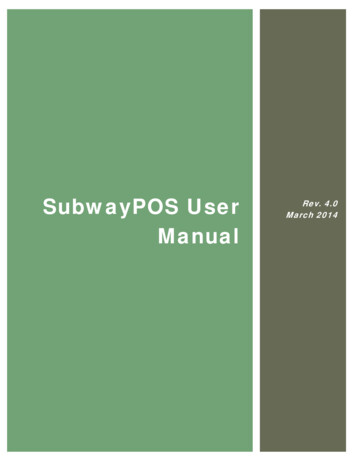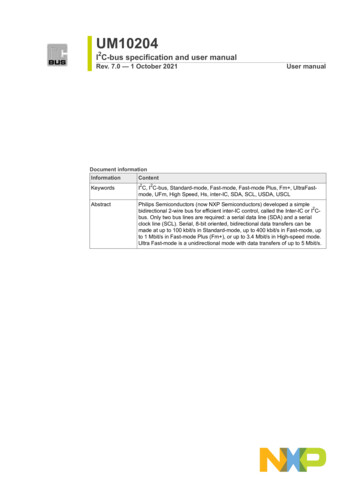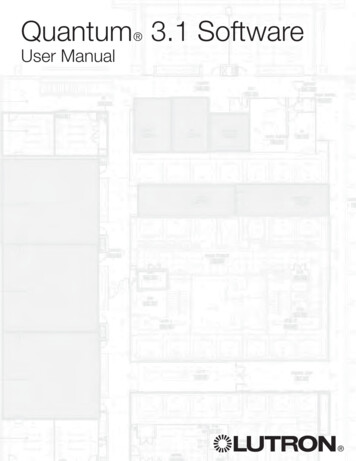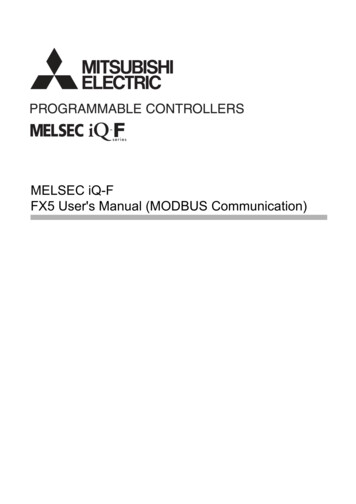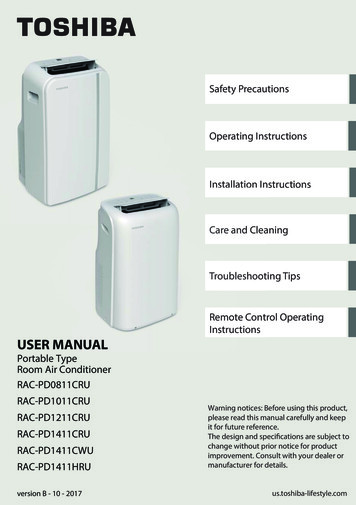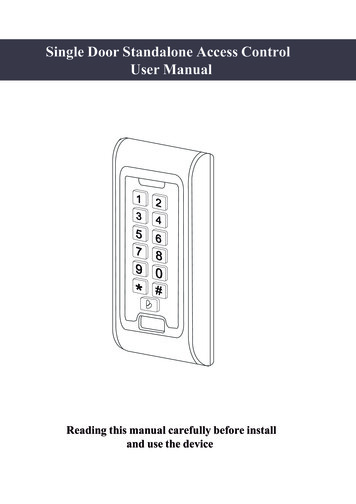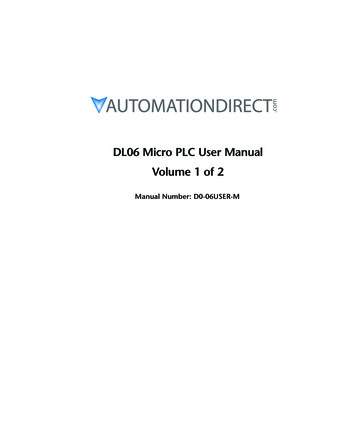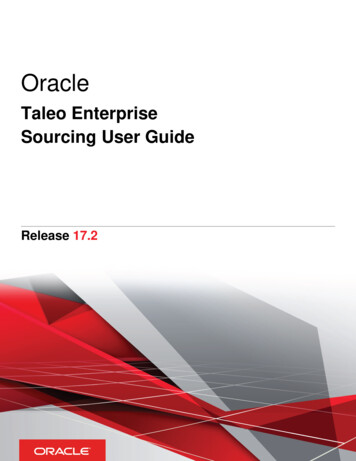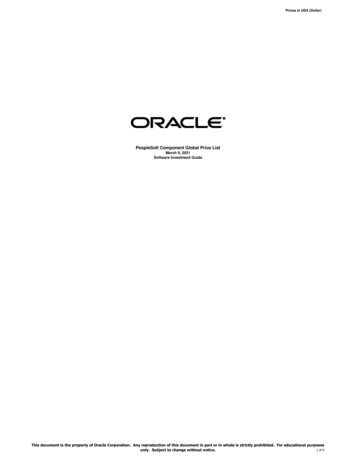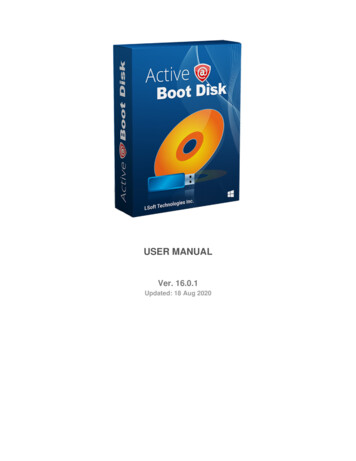
Transcription
USER MANUALVer. 16.0.1Updated: 18 Aug 2020
Contents iiContentsLegal Statement. 4Product Overview. 4Operating System.8Boot Disk Creator.9System Requirements. 9RAM Management. 10Downloading Boot Disk Creator.10Registration. 11Software Updates. 13Using Boot Disk Creator. 15Drivers and Scripts.21Booting from CD/DVD/USB. 22Bootable Media Profiles. 22Windows-based Boot Disk.22Start Button Main Menu. 25Quick Launch Icons.29System Utility Icons.30Desktop Shortcuts and Labels.40Console-based Boot Disk (TinyCore). 41Main Menu.44Utilities And Tools. 507-Zip File Manager. 51Notepad Text Editor.52Calculator. 53Honeyview Image Viewer. 54SumatraPDF Document Viewer. 56Registry Editor.57System. 59System Information. 61Check Local Disks. 62Search & Edit Local Registry Utility. 64Add Language & Keyboard Layout. 65Bootable Configuration Editor (BCD).67Console Tools. 68Command Prompt. 69View Network Status. 70Disk Manager (DiskPart). 72RAID Manager (DiskRAID). 74FTP Client. 75 1999 - 2020 LSoft Technologies Inc.
Contents iiiNetwork Tools. 75Map Network Drive. 76Internet Tools.77Web Browser. 77Mail Sender.79Professional Tools. 79Windows PowerShell.80BitLocker Manager.81BitLocker Repair. 81iSCSI Manager. 82WMI Console. 82SSH Client. 82Programs. 83Active@ Disk Image. 85Active@ Data CD/DVD/Blu-ray Burner. 93Active@ Disk Editor. 95Active@ Disk Monitor.100Active@ File Recovery.105Active@ KillDisk. 117Active@ Partition Manager. 125Active@ Partition Recovery.129Active@ Password Changer. 139Active@ ZDelete. 143Console-based (TinyCore Linux) Versions. 146Active@ Password Changer. 147Active@ Hex Editor. 155Active@ File Recovery. 162Active@ Partition Recovery. 168Active@ Disk Image. 172Active@ KillDisk.181Appendix.190BIOS Boot. 190UEFI Secure Boot. 192BIOS vs. UEFI. 192Erase/Wipe Methods (Sanitation Standards).193Glossary. 195 1999 - 2020 LSoft Technologies Inc.
Legal Statement 4Legal StatementCopyright 2020, LSOFT TECHNOLOGIES INC. All rights reserved. No part of this documentation maybe reproduced in any form or by any means or used to make any derivative work (such as translation,transformation, or adaptation) without written permission from LSOFT TECHNOLOGIES INC.LSOFT TECHNOLOGIES INC. reserves the right to revise this documentation and to make changes incontent from time to time without obligation on the part of LSOFT TECHNOLOGIES INC. to providenotification of such revision or change.LSOFT TECHNOLOGIES INC. provides this documentation without warranty of any kind, either impliedor expressed, including, but not limited to, the implied warranties of merchantability and fitness for aparticular purpose. LSOFT may make improvements or changes in the product(s) and/or the program(s)described in this documentation at any time.All technical data and computer software is commercial in nature and developed solely at private expense.As the User, or Installer/Administrator of this software, you agree not to remove or deface any portionof any legend provided on any licensed program or documentation contained in, or delivered to you inconjunction with, this User Guide.Active@ Boot Disk, Active@ Boot Disk Creator the Active@ Boot Disk logo are trademarks ofLSOFT TECHNOLOGIES INC.LSOFT.NET logo is a trademark of LSOFT TECHNOLOGIES INC.Other brand and product names may be registered trademarks or trademarks of their respective holders.Product OverviewActive@ Boot Disk is a powerful set of tools engineered to help you in a number of data recovery anddata security situations.Active@ Boot Disk combines a number of powerful tools that let you recover lost data, reset Windowspasswords, make computer system backups and securely erase data. Active@ Boot Disk starts when youstart your computer from a bootable CD/DVD/BD Disc or USB Flash Media.Active@ Boot Disk supports legacy BIOS boot mode as well as the latest UEFI secure boot on x64 (64bit) architectures.Active@ Boot Disk suggests a customizable user interface starting from version 13. You can createshortcuts for the additional portable user’s tools on the Desktop and in the Start menu the same way asyou do it in Windows Desktop environment. These shortcuts can be saved to USB media and restoredwhen you boot up the system the next time even on the different PC configuration. Network settings andcurrent Display resolution can also be customized and stored to USB the same way.When you use Active@ Boot Disk, you gain access to the drive's data on a physical level, and on alogical level, therefore bypassing the resident operating system. This allows you to lock selected volumesfor your exclusive use. Locking a volume is important if you want to wipe the data residue from anunoccupied space on the drive, create a “clean” data backup or recover files or folders located on yoursystem volumes.When you boot from the local hard drive, the operating system is not capable of locking the existingvolumes. The recovery operation must have exclusive access to the target location. Otherwise if a serviceor another application gains access to the target location, it might write over the files that you are trying torecover, rendering them unrecoverable. 1999 - 2020 LSoft Technologies Inc.
Product Overview 5Here are some other functions that you can perform with Active@ Boot Disk by booting from the CD/DVD/USB:Full access to non-bootable PCAbility to start non-bootable PC to get exclusive access to the local disks and systemBackup and RestoreIf you backup the system drive with Windows running from the same drive, when you restore thebackup, it will start as though you are recovering from a loss of power since the boot up will startwith system
Product Overview 6 PC upgrades or media duplication purposes. In case of computer failure, a backup image may be used to recover your computer system or

